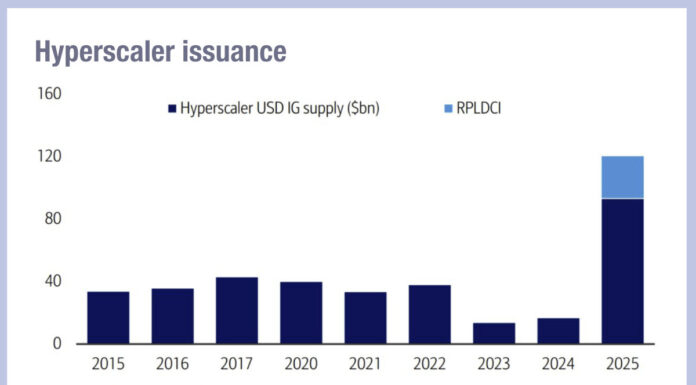Lessons on the viability and competitiveness of liquidity aggregation tools can be drawn form the last decade of research conducted by The DESK.
In 2015 The DESK published its first Trading Intentions Survey, assessing ‘liquidity aggregation’ tools for buy-side traders in corporate bond markets, to help assess the viability of new tools and services.
Buy-side traders suggested the following as key criteria:
- Allowing buy-side-to-buy-side crossing: All-to-all is agreed to be a must, but purely buy- side-to-buy-side trading is also highly valued by several traders.
- Mandatory, automatic blotter scraping: Hoping that buy-side traders will contribute is too optimistic. They are busy and any lag in frequency of contributions to a platform will lower the success rate for matching orders, leading into a cycle of failure.
- Understanding and being able to interrogate the ownership structure: The sentiment from several respondents towards a sell-side owned platform that facilitated buy- side-to-buy-side crossing was negative.
- An independent clearing and settlement agent: A liquidity aggregation system owned by one investment manager may be acceptable but is not neutral and post-trade processing ought to be handled independently.
The previous years had seen the shuttering of several big sell-side platforms, Morgan Stanley’s Bond Pool, Goldman Sachs’ GSessions and Citi Credit Cross.
Multilateral trading platforms were expanding through acquisition and partnership.
MarketAxess acquired market data and post-trade service firm, Trax, and partnered with BlackRock’s Aladdin order management system in US credit for the all-to-all open trading tool Open Trading.
Nasdaq bought US Treasury trading platform eSpeed from BGC, giving it the second largest market share in cash US treasury trading, and MTS Markets bought Bonds.com
In this period of significant change, buy-side traders said needed to know what their peers thought of the new offerings.
We conducted research into ‘liquidity aggregation’ tools, capturing pre-trade liquidity analytics, trading venues, and execution tools for pooling internal orders and matching them with external trading flows.

In the first research we conducted, five electronic trading platforms or data sources were in use by 10% or more of buy side trading desks – Bloomberg, B2Scan, HSBC Creditplace, MarketAxess and Tradeweb.
Of those surveyed, 83% were Bloomberg users, 83% Tradeweb users, and 80% were MarketAxess users. B2Scan had a 17% user base and 13% were using HSBC Creditplace.
We also asked which platforms traders planned to use. The expectations for use of some platforms were already massive.
Eighteen different systems had 10% or more of respondents expecting to use them. The first tier were block-trading platform Liquidnet (58%), pre-trade liquidity aggregator Algomi (54%), and axe publishing platform Project Neptune (50%).
The second tier were trading platform Bondcube (33%), dark pool ITG POSIT (25%), e-trading platform Electronifie (21%), and venue Tradeweb (21%), which was an incumbent but also known more for its rates business than for corporate bonds.
A very prescient comment on pre-trade data tools, made by a trader in 2010 was, “The fact is that you are building them an incredibly valuable asset and you don’t own it.”
Although other traders noted the ability to see this information aggregated together was invaluable, and in the short term provided one of the better ways of finding a match while reducing information leakage.
The next decade showed that the relationship between ownership and data proved crucial to future platforms’ successes.
The big surprises
By the fifth survey, in 2019, the market had been hit by some major surprises.
Bondcube had launched and almost immediately closed, due to a lack of engagement on the platform, shaking traders’ confidence in engaging with new projects.
Other noted closures were State Street FI Cross which shut in 2016 alongside Bloomberg’s associated BBX crossing product; Euronext’s BondMatch which was shut on 21 July 2017 with Euronext Synapse, the new multilateral trading facility (MTF) powered by Algomi being mooted as its replacement; and agency broker ITG shutting its POSIT FI officially in November 2017.

Algomi had seen a marked decline in users from 56% of respondents in 2017 down to 21% in 2019, as it struggled to support access to data and deliver a functional commercial model; it bought the Alfa platform from AllianceBernstein in an effort to increase functionality.
Banks sold their index businesses to trading venues, with Bloomberg acquiring the Barclays fixed income indices business, ICE buying the Bank of America Merrill Lynch fixed income index platform and LSEG buying the Citi YieldBook bond analytics and index business for US$685 million.
Big acquisitions were all happening in the US markets as BGC acquired GFI and embonds, CME bought NEX Group in March 2018, in a deal worth US$5.5 billion, bringing the major Treasury cash and futures platforms under one roof, ICE bought TMC Bonds, a retail corporate bond trading system, and Virtu Financial’s sold Bondpoint platform while IHS Markit bought Ipreo, the bond issuance data and workflow firm, for US$1.86 billion.
In Europe, an inhibitor to activity in this period was the European Union’s revised Markets in Financial Instrument Directive and Regulation (MiFID II & MiFIR) which had the effect of decreasing capacity and budget for trading desks to support new initiatives in the preceding period, while also generating greater levels of data once the rules came into effect from January 2018.
Processing voice trades on platforms increased their use, albeit to support reporting obligations. The absence of a single post-trade tape of price data, such as the US has with the Trade Reporting and Compliance Engine (TRACE), meant that pre-trade data tools such as Algomi and B2Scan were proving more popular with firms that have European operations, while asset managers that had only US operations were more inclined towards proprietary pre-trade data tools.

By 2019, MarketAxess was the most used venue for corporate bond trading, closely followed by Tradeweb then Bloomberg, and Liquidnet with 69% of respondents using the platform.
In pre-trade data, Neptune, Algomi, B2Scan and proprietary data tools were all seeing major use by buy-side firms, alongside the offerings of Bloomberg and MarketAxess.
BlackRock’s Aladdin and State Street’s Charles River Development (CRD) were the dominant order/execution management systems yet only 7% of respondents were using them to aggregate liquidity. Dedicated execution management systems were struggling at this point, with the TradingScreen seeing single digit use for liquidity aggregation and others such as FlexTrade and Axe Trading still flagged for future use.
Lessons today
In the tenth survey, conducted in 2024, big changes could be seen. Firstly, despite their best efforts, independent pre-trade analytics providers had collapsed. Despite high usage levels, neither Algomi nor B2Scan had been able to create an economic model without having a direct source of data as would exist for a venue, dealer or buy-side backed platform.

Neptune is in use by over half of respondents, demonstrating that efficient engagement with axes is still key to liquidity discovery for buy side traders, with approximately half of users classifying themselves as major users of the platform.
Proprietary analytics tools are the fifth most commonly used service, a major part of the buy-side armoury and use of dealer streamed prices is also invaluable pre-trade.
Both Liquidnet and ICE are well-used pre-trade tools, while other platforms are relatively nascent across the whole respondent base.
Bloomberg is the leading pre-trade service, with the greatest number of buy-side desks in 2024, with 94% of respondents using it. MarketAxess is in use by 76% of respondents, followed by Tradeweb at 62%.
The leading communication channel or interface is Bloomberg IB / message which 88% of respondents use today, most of whom are major users, reflecting the need for unstructured communication in bond market negotiations across both comp and non-comp trades
MarketAxess’ GUI is used by 79% of respondents, making it the leading trading platform interface in credit. That is closely followed by Tradeweb; with 76% of the market Tradeweb has proven itself very able in the credit space.
The EMS/OMS debate stays skewed firmly towards the OMS, with CRD and Aladdin still on top. There are EMS users but they are not the norm. One aspect stands out – they are heavily used when they are in place. Bloomberg’s E/OMS services are used by 47% of respondents and more than half of those are major users of those tools. Charles River is used by 18% of firms and two thirds of users are major users. Aladdin has been adopted by 21% of respondents with over half seeing themselves as major users.

Competition between trading platforms has proven effective at delivering innovation. Firms like UBS BondPort, Liquidnet, Trumid and CanDeal have show that platforms offering alternative ways of trading can attract or add to available liquidity. Liquidnet’s credit trading venue is in use by 46% of buy-side firms, and the BondPort platform from UBS has nearly 30% of respondents using it. These are in line with historical use.
The big firms have been in the top slots for the last ten years, but newer platforms have also achieved success.
The most widely adopted secondary market bond trading platform now is Bloomberg, used by 97% of respondents. MarketAxess has 87% of firms using it for trade execution, while Tradeweb is third at 74%. Each has fought tooth and nail via new trading protocols, platform interface enhancements and other services to encourage buy-side firms to use them to connect with dealers.
©Markets Media Europe 2025













